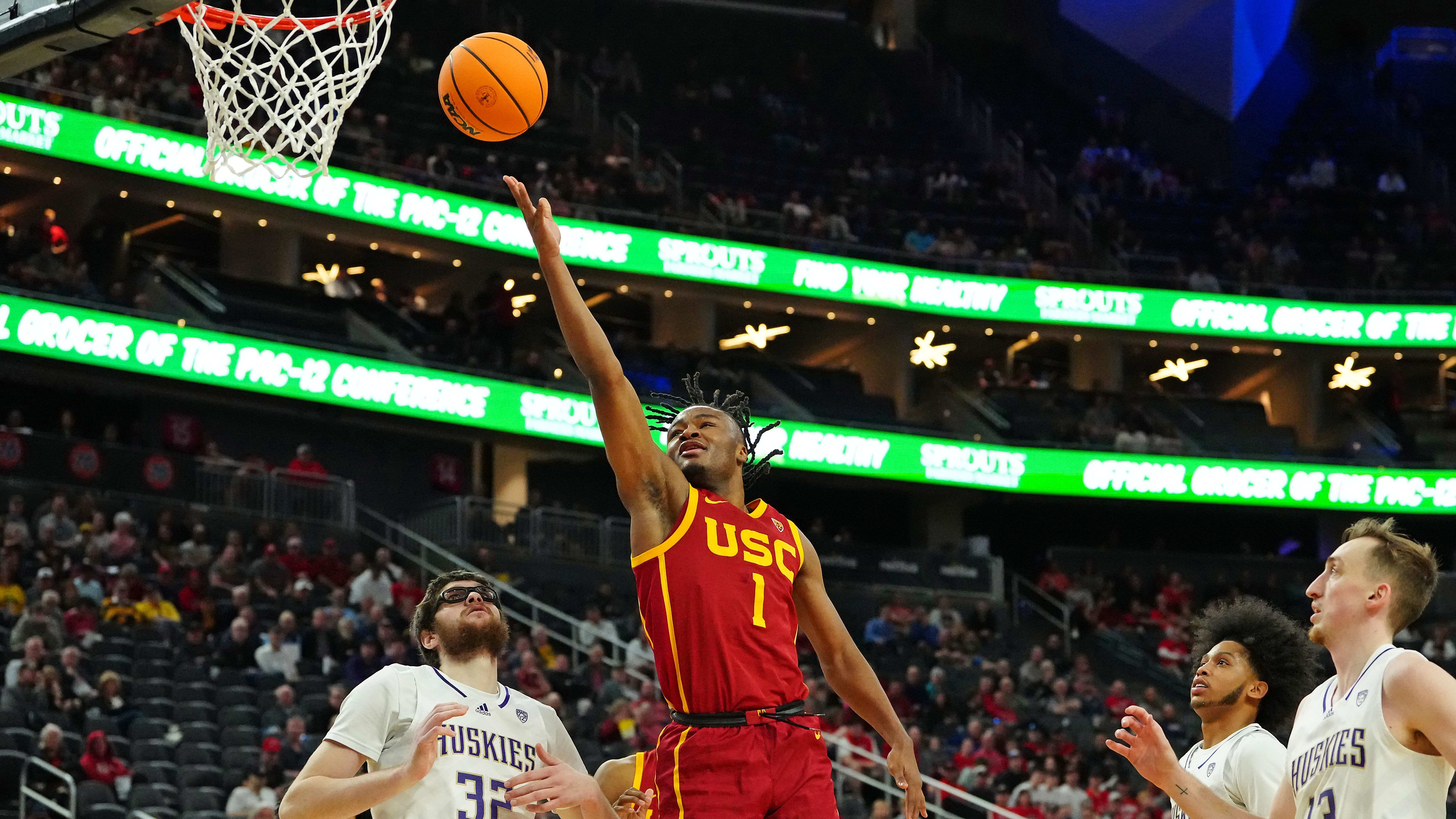
NBA Draft: Is Isaiah Collier Hiding in Plain Sight?
The 6-foot-5 point guard is strong and capable, but has seemingly seens his stock drop.
Isaiah Collier entered this season as one of the highest rated players in college basketball, and a serious candidate to go first overall in the 2024 NBA Draft.
He left his first season projected as a late-lottery selection, which is a significant drop when you also factor in the lacking quality of the class he's associated with. That said, the draft is still a few months away, which does give him time to increase his reputation in league circles, potentially seeing him rise up the boards.
So, you might wonder what went wrong. The simple answer is he struggled to an extent people didn't think he would, after a strong start, initially.
Collier put up 18, 19, 23 and 24 points over his first four games, so surely he was to be given some leeway if he dropped off from that?
Not really.
The critics came in hard after he went through a 10-game stretch of barely cracking 22% efficiency from range, bricking free throws and overall looking like more of a project than originally believed.
He then missed almost a month with a hand injury, failing to gain a lot of traction before missing time. This didn't endear him to the cruel mock drafters out there, even if he did seemingly manage to put the ball in the basket a decent rate regardless of shooting woes.
(There are also questions about his effectiveness as a playmaker, but given that he didn't exactly play with a ton of quality players, I'm deliberately pushing that aside from now, as we simply don't know if that was a product of situation. It's worth keeping it in the back of mind, though.)
To maintain the tone of optimism, let's instead look at what Collier does offer, seeing as it'd be shortsighted to pin him as a mid-round pick in this class in particular.
For one, Collier's size at the point guard position is elite. He's 6-foot-5, 210 pounds, has broad shoulders, a strong base, and showed all year long that he can absorb contact. That's the kind of stuff that matters at the next level. If a player can get from Point A to Point B on his own, and find himself close to the basket, he's got value. Full stop. Collier's frame allows him to do just that.
Secondly, despite only connecting on around 67% from the line, Collier got there in the first place. And a lot. He'll force opponents to hack him, due to his ability to convert around the rim, and that means earlier foul issues for opponents, and free points at the line. For any guard to average almost six attempts per game from the foul line in college, where so many teams play zone, is a testament to how dangerous he could be at the NBA level where it's more open, and he can utilize driving lanes much more.
Finally, and this might be me just buying into something that isn't there, but it's worth noting: He went through the aforementioned 10-game stretch of poor long-range shooting, and still ended the year hitting 33.8% from the behind the arc.
That means there's a scattered 16-game sample size of him converting at a far better rate, than anyone is seemingly interested in giving him credit for.
Does that mean he's coming into the NBA as some elite shooter? No. Not even close. But it could mean there's more upside in that department than anyone is willing to admit. And if that's the case, it'd be difficult to justify not picking him in the top 10 or higher, especially this year.
Collier might not be the most interesting name in college basketball anymore, but that doesn't mean we should forget about him.
Unless noted otherwise, all stats via NBA.com, PBPStats, Cleaning the Glassor Basketball-Reference. All salary information via Spotrac. All odds courtesy of FanDuel Sportsbook.
Want to join the discussion? Like Draft Digest on Facebook and follow us on Twitter to stay up-to-date on all the latest NBA Draft news. You can also meet the team behind the coverage.